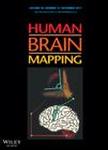版权所有:内蒙古大学图书馆 技术提供:维普资讯• 智图
内蒙古自治区呼和浩特市赛罕区大学西街235号 邮编: 010021

作者机构:Hosp Gen Gregorio Maranon Lab Imagen Med Med & Cirugia Expt E-28007 Madrid Spain
出 版 物:《HUMAN BRAIN MAPPING》 (人脑图像描记)
年 卷 期:2004年第22卷第2期
页 面:133-144页
核心收录:
学科分类:0710[理学-生物学] 1001[医学-基础医学(可授医学、理学学位)] 07[理学] 1010[医学-医学技术(可授医学、理学学位)] 09[农学] 1009[医学-特种医学]
主 题:nonuniform intensity correction NIC magnetic resonance imaging bias field intensity inhomogeneities segmentation algorithms
摘 要:This work presents a new algorithm (nonuniform intensity correction;NIC) for correction of intensity inhomogeneities in T1-weighted magnetic resonance (MR) images. The bias field and a bias-free image are obtained through an iterative process that uses brain tissue segmentation. The algorithm was validated by means of realistic phantom images and a set of 24 real images. The first evaluation phase was based on a public domain phantom dataset, used previously to assess bias field correction algorithms. NIC performed similar to previously described methods in removing the bias field from phantom images, without introduction of degradation in the absence of intensity inhomogeneity. The real image dataset was used to compare the performance of this new algorithm to that of other widely used methods (N3, SPM 99, and SPM2). This dataset included both low and high bias field images from two different MR scanners of low (0.5 T) and medium (1.5 T) static fields. Using standard quality criteria for determining the goodness of the different methods, NIC achieved the best results, correcting the images of the real MR dataset, enabling its systematic use in images from both low and medium static field MR scanners. A limitation of our method is that it might fail if the bias field is so high that the initial histogram does not show bimodal distribution for white and gray matter. (C) 2004 Wiley-Liss, Inc.